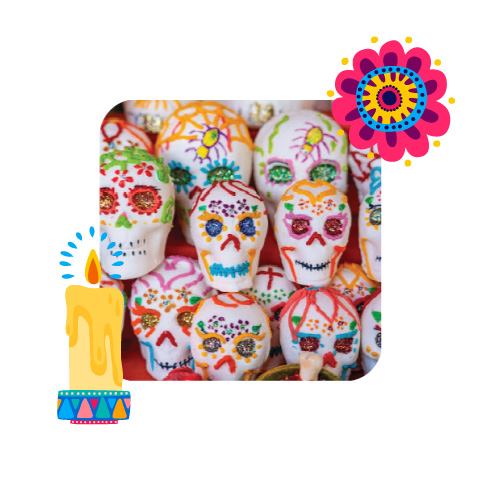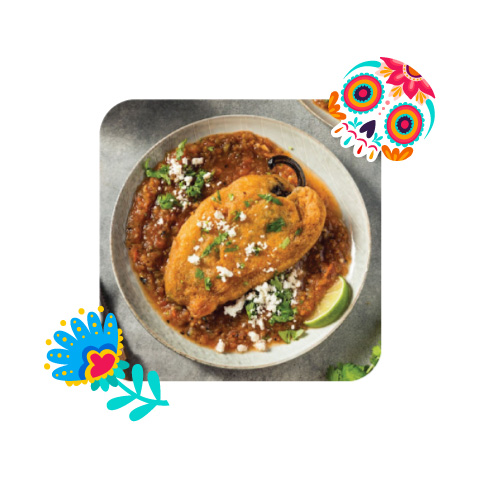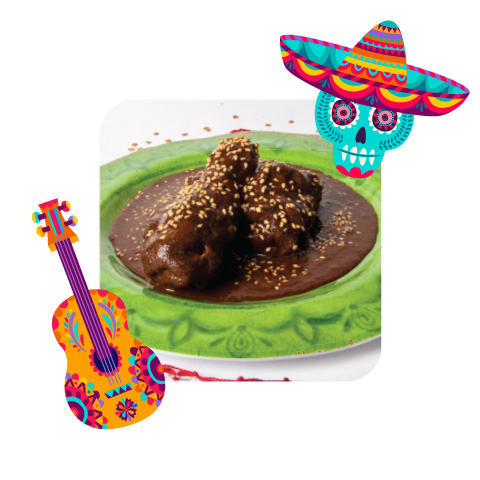.jpg)
Celebrate Your Family!
Feliz DÍa De Los Muertos
Dia de los Muertos, or Day of the Dead, is a celebration of life and a cheerful remembrance of those who have passed away. Here is an explanation of some Dia de los Muertos day-to-day traditions to shed light on what this holiday is all about. Grab your celebration essentials here!
Build An Ofrenda
Ofrenda, which translates to "offerings" are a tradition in Mexico and other parts of Latin America. Set up in homes to welcome home the souls of those who have left us too soon. Also known as an Altar, it is a happy and colorful celebration where those who have gone before us are honored and remembered.
Ofrenda Recipes

Sugar Skulls
Usually made with the departed's name written on the forehead, sugar skulls (calaveras de azúcar) represent those who have passed and are easily the most recognizable symbol of Dia de los Muertos. These sugary decorations are placed on altars (ofrendas) after being decorated with bright colors and personalized designs to celebrate the lives of the departed. Here is a step by step guide on how to make your own sugar skulls for Dia de los Muertos.



*This recipe is a compilation of various sources, drawing from several authors and culinary traditions.*
.jpg)
Celebrate Your Family!
Feliz DÍa De Los Muertos
Dia de los Muertos, or Day of the Dead, is a celebration of life and a cheerful remembrance of those who have passed away. Here is an explanation of some Dia de los Muertos day-to-day traditions to shed light on what this holiday is all about. Grab your celebration essentials here!
Build An Ofrenda
Ofrenda, which translates to "offerings" are a tradition in Mexico and other parts of Latin America. Set up in homes to welcome home the souls of those who have left us too soon. Also known as an Altar, it is a happy and colorful celebration where those who have gone before us are honored and remembered.
Ofrenda Recipes

Sugar Skulls
Usually made with the departed's name written on the forehead, sugar skulls (calaveras de azúcar) represent those who have passed and are easily the most recognizable symbol of Dia de los Muertos. These sugary decorations are placed on altars (ofrendas) after being decorated with bright colors and personalized designs to celebrate the lives of the departed. Here is a step by step guide on how to make your own sugar skulls for Dia de los Muertos.

Rajas con Crema
Taste the flavors of Mexico with our Rajas con Crema recipe, a traditional dish perfect for celebrating the Day of the Dead. This creamy delight features roasted poblanos, onions, and corn, creating a mouthwatering combination of flavors for a hearty meal to share and celebrate.
*This recipe is a compilation of various sources, drawing from several authors and culinary traditions.*









